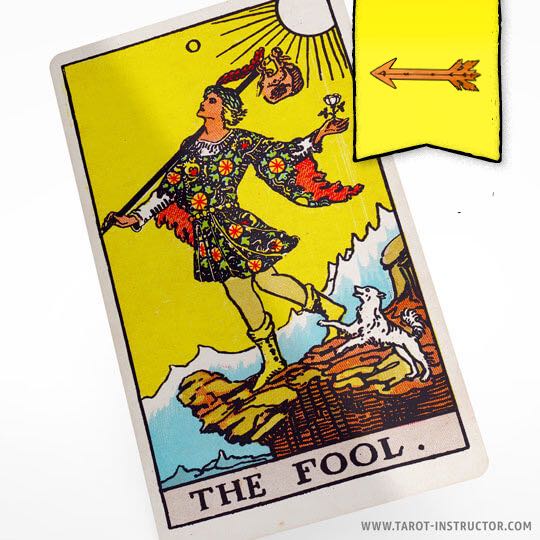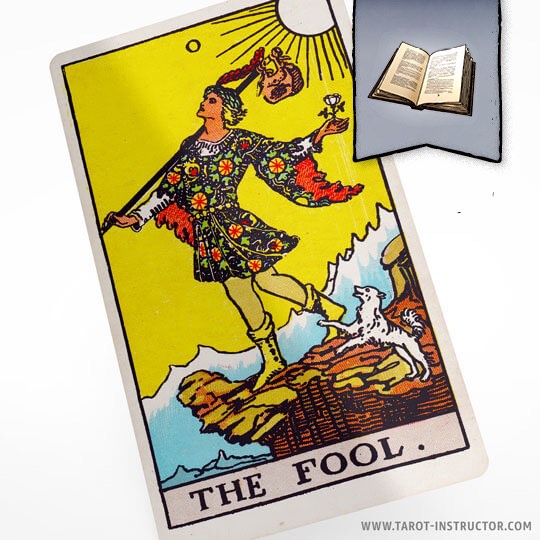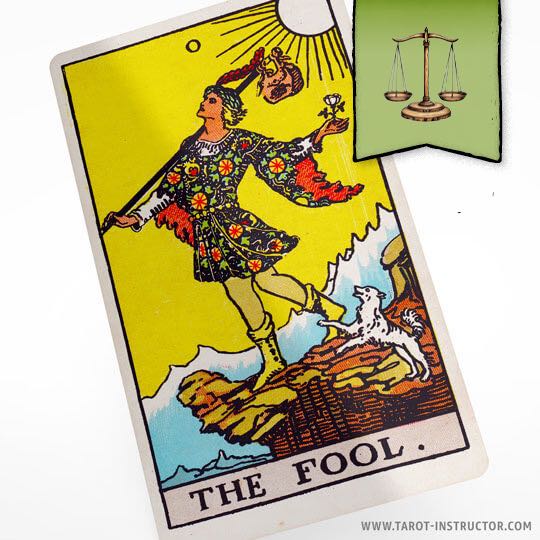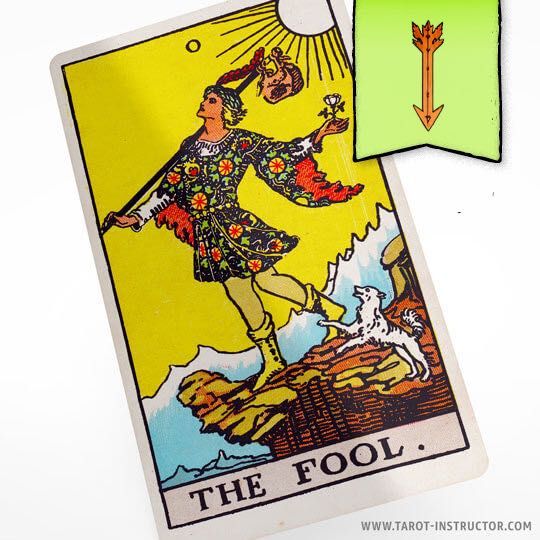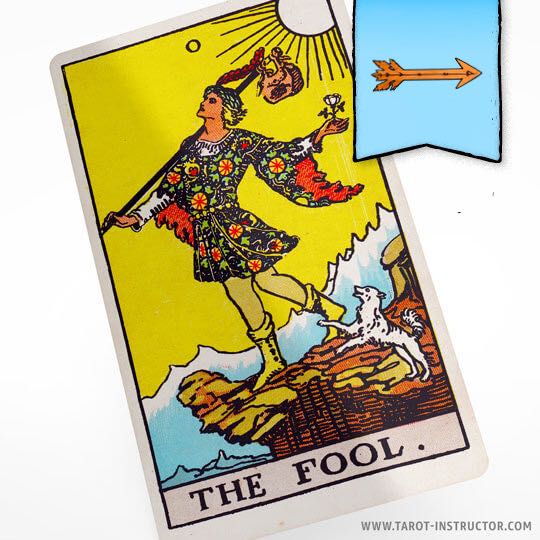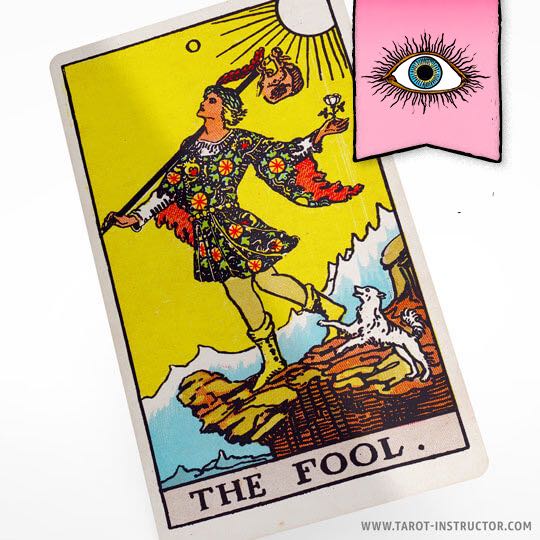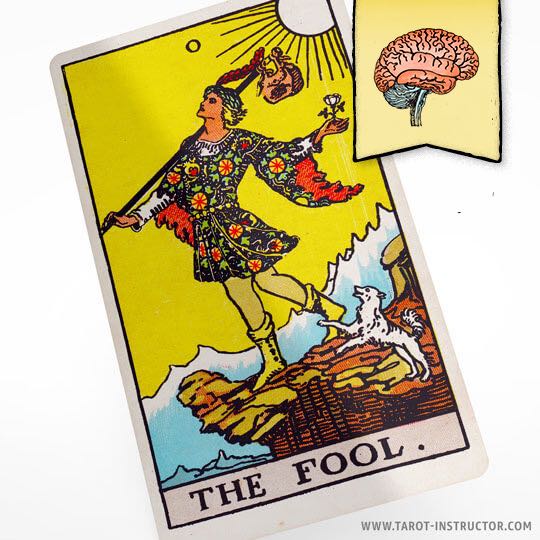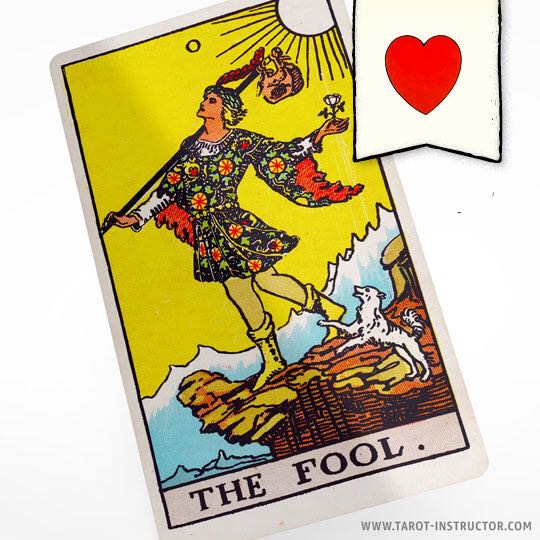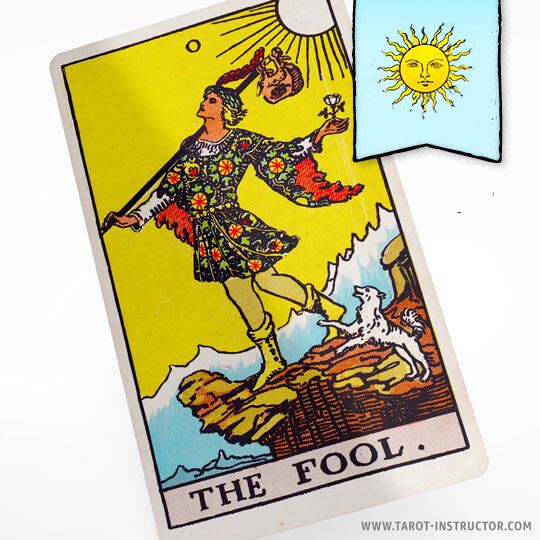The Fool tarot card features following symbolic elements
The Fool tarot card features following symbolic elements
The Fool as a love outcome suggests a fresh start, embracing spontaneity and a carefree spirit in relationships. The Cliff signifies the willingness to take risks and explore the unknown aspects of love. The Dog emphasizes the need for instinct and loyalty, highlighting the importance of trusting one’s intuition in romantic matters. The Rose represents purity and potential, embodying the beauty and promise of new love.
The Wand conveys creativity and energy, reflecting the drive to nurture and enhance the relationship. The Mountains indicate that challenges and obstacles may arise, but with determination, they can be overcome. The Sun embodies positivity and enlightenment, suggesting that despite the difficulties, the outcome is likely to be successful and fulfilling.
The Fool as advice
„Embrace new beginnings and trust the journey ahead.“
The Fool keywords upright
Spontaneity, Adventure, Innocence, Beginnings, Playfulness, Optimism.
The Fool keywords reversed
Carelessness, Recklessness, Naivety, Foolhardiness, Impulsiveness, No Direction.
The Fool card element
Aquarius
The Fool zodiac sign
Air
Understanding The Fool as Past Upright and Reversed
The Fool is one of the most iconic cards in the Tarot deck, often representing new beginnings, spontaneity, and a sense of adventure. When drawn in the context of a past influence, The Fool as past can provide deep insights into various aspects of relationships—whether they are new, existing, or former. In this article, we will explore the meanings of The Fool as past in the context of relationships, both upright and reversed, providing a comprehensive understanding of its implications in different relationship scenarios.
The Fool Card: An Overview
Before diving into its implications in relationships, it’s essential to understand what The Fool as past represents in the Tarot. The card is often numbered as zero, symbolizing potential, freedom, and a blank slate. The Fool as past embodies a spirit of adventure, a willingness to take risks, and an openness to new experiences. When interpreted in the context of the past, The Fool as past can indicate a time when one was open to possibilities, perhaps acting without a full understanding of the consequences.
The Fool as Past in Potential Relationships
Upright: In the upright position, The Fool as past signifies a time when one was open-minded and adventurous regarding potential relationships. This openness likely attracted new people into one’s life. There was a willingness to explore connections without the burden of past baggage or fears. Being carefree and optimistic, the individual may have taken risks that led to exciting encounters or brief but impactful relationships.
The energy of The Fool as past encourages embracing life’s uncertainties. This attitude likely fostered an environment where potential relationships could flourish. The individual might have been more inclined to meet people through spontaneous activities or social gatherings, leading to connections that were both thrilling and enriching. The Fool’s influence suggests that these experiences helped shape the person’s understanding of love and companionship in a light-hearted, exploratory manner.
Reversed: When The Fool as past appears in reverse in the context of potential relationships, it can indicate missed opportunities or a reluctance to take risks. Looking back, one might realize that fear of the unknown hampered their ability to form new relationships. The reversed Fool as past might suggest that the individual was overly cautious, clinging to past experiences that prevented them from fully engaging with new people.
In this state, the individual may have found themselves stuck in a cycle of analyzing potential partners rather than embracing the moment. This mindset could lead to a feeling of stagnation, as opportunities for connection slipped by unnoticed. The reversed Fool as past serves as a reminder that sometimes, to find love and companionship, one must be willing to step outside of their comfort zone and embrace the unknown.
The Fool as Past in New Relationships
Upright: The Fool as past in an upright position concerning new relationships reflects a time filled with hope and excitement. The past may have been marked by a series of new encounters where the individual approached potential partners with an open heart and mind. This openness allowed for genuine connections to form, characterized by enthusiasm and a shared sense of adventure.
During this period, new relationships may have blossomed quickly, fueled by a mutual desire to explore life together. The Fool as past encourages a carefree attitude, suggesting that the individual likely enjoyed these relationships without overthinking or worrying about the future. This carefree, joyful exploration may have led to memorable experiences and laid the groundwork for deeper connections.
Reversed: When The Fool as past appears reversed in the context of new relationships, it often highlights a past marked by indecision or unrealistic expectations. The individual may have been overly idealistic, approaching new relationships with a sense of naivety that ultimately led to disappointment. In this state, they might not have fully recognized red flags or complications that could arise.
The reversed Fool as past can also indicate a tendency to rush into relationships without proper consideration or maturity. This impulsiveness may have resulted in relationships that lacked depth or stability. Reflecting on this period, the individual might recognize how their hesitations or unrealistic views on love hindered their ability to form meaningful connections.
The Fool as Past in Existing Relationships
Upright: The Fool as past in an upright position regarding existing relationships suggests a time of joy and lightness. The individual may have approached their current relationship with a sense of playfulness and adventure. This positive outlook could have fostered a deep bond between partners, characterized by shared experiences and mutual support.
In this context, The Fool as past encourages spontaneity within the relationship. Couples may have engaged in new activities together, traveled, or explored new interests, which kept the relationship vibrant and exciting. The energy of The Fool as past indicates that both partners were likely willing to take risks for love, creating a sense of trust and freedom in their connection.
Reversed: When The Fool as past appears reversed in the context of existing relationships, it often points to a period of stagnation or disconnection. The individual may have felt trapped in their relationship, where spontaneity and joy were replaced by routine and predictability. The reversed Fool as past can signify a lack of communication or an unwillingness to take risks that could enhance the relationship.
This energy may have led to feelings of frustration or dissatisfaction. The individual might have looked back at this time and recognized that their reluctance to engage with their partner creatively or openly contributed to a decline in intimacy. It serves as a reminder that relationships require ongoing effort and willingness to embrace change to thrive.
The Fool as Past in Ex-Relationships
Upright: In the context of ex-relationships, The Fool as past upright can signify a past marked by growth and valuable lessons. The individual may have approached their previous relationship with enthusiasm and an open heart. While it may not have lasted, the experiences gained from it were enriching and helped shape their views on love.
Reflecting on this ex-relationship, the individual might recognize the freedom and adventure they experienced alongside their partner. Even if the relationship ended, it likely provided essential insights into their desires and needs in future connections. The upright Fool as past suggests that this past relationship was not a waste but rather a necessary step on their journey toward understanding love more deeply.
Reversed: When The Fool as past appears reversed in the context of ex-relationships, it may indicate a time of regret or lessons unlearned. The individual might look back on their previous relationship and see it as a series of mistakes or missed opportunities. This energy suggests that the person may have acted impulsively or naively, leading to unresolved issues that carried over into their future relationships.
The reversed Fool as past can also signify a reluctance to move on from the past. The individual may find themselves stuck in a cycle of regret or nostalgia, longing for what once was without acknowledging the reasons for the relationship’s end. This reflection can serve as a crucial lesson: to truly move forward, one must learn from past mistakes rather than dwell on them.
Conclusion
The Fool as past is a card rich with meaning and implications, especially when considering its influence on relationships. In its upright position, it represents adventure, openness, and growth, while in its reversed state, it warns of stagnation, missed opportunities, and lessons unlearned. By examining The Fool as past in various relationship scenarios—potential, new, existing, and ex-relationships—we can gain valuable insights into our past behaviors and choices.
Understanding these dynamics can empower individuals to embrace their journey toward love with a renewed sense of clarity and purpose. Whether learning from past mistakes or celebrating joyful experiences, The Fool as past reminds us that every relationship contributes to our growth and understanding of ourselves and others. Ultimately, the journey through love is an adventure worth taking, filled with lessons that shape who we are and who we aspire to be.
Source: Wikipedia The Fool tarot card
Reddit About The Fool Card
Quora The Fool card meaning
Unlock the mysteries of tarot cards.
